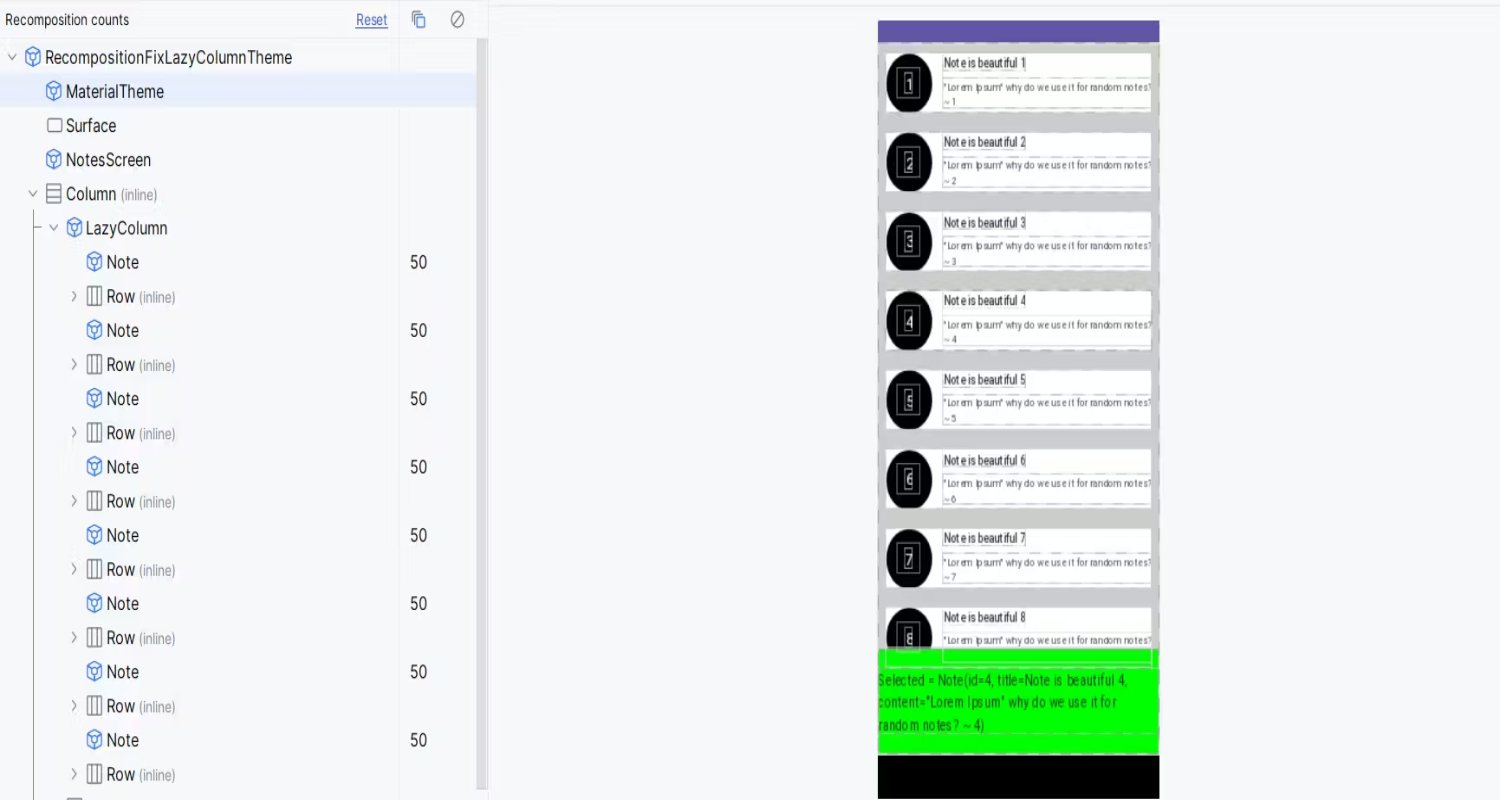
Imagine this: You’re navigating through your phone’s files, seeking to free up some much-needed space, and there it is, the LazyList folder. Its presence raises questions – is it consuming valuable storage? Is it safe to delete? The uncertainty can be unsettling, leading to hesitation and concern about potentially disrupting your device’s performance.
What is LazyList on Android? LazyList on Android is a system-generated folder that stores cached image files used by apps to enhance performance and speed up loading times, by avoiding repeated downloads from the internet.
But fear not! We’re here to demystify the LazyList, to transform it from a source of confusion into a component of your Android device that you understand and manage with confidence. Let’s dive into the world of LazyList, uncover its functions, and learn how to master this hidden aspect of your Android experience.
See Also: What is DQA App on Android? A Comprehensive Overview
What is LazyList?
Have you ever been curious about the inner workings of your Android device, particularly those hidden files that seem to appear out of nowhere? One such file is the LazyList, or as some might ask, “what is lazylist folder android?” It’s not just a random collection of data; it’s a clever system designed to make your smartphone experience smoother and faster.
Definition and Basic Concept
At its core, the LazyList is a storage system. Think of it as a secret vault where your Android device keeps certain files for quick access. Specifically, it stores cached image files. These are images that your apps have already used or might use in the future. Why does this matter? It’s all about efficiency. By storing these images in the LazyList, your phone can quickly retrieve them without having to download them again from the internet. This means faster loading times for your apps and less waiting for you. Learn more about how Android manages its storage for optimal performance.
How LazyList Functions in Android
LazyList operates quietly in the background. Every time you use an app that displays images (which is almost every app these days), your phone checks if these images are already in the LazyList. If they are, voilà! The image loads instantly. If not, the image is downloaded and then stored in the LazyList for future use. This process is seamless, so much so that you might not even realize it’s happening. But it’s there, working tirelessly to ensure your apps run as smoothly as possible.
The Creation and Use of LazyList
In the intricate world of Android, the LazyList folder is not just an accidental creation; it’s a deliberate and intelligent design, integral to the concept of ‘android lazylist’. This folder is like a backstage area where your phone’s apps store their props and tools, ready to be used at a moment’s notice.
How and Why LazyList Folders are Created
The creation of a LazyList folder is a strategic move by your Android device. It’s all about optimizing performance. When you use apps that require images – and let’s face it, that’s most apps – your device anticipates future needs. It creates the LazyList folder as a dedicated space to store these images after their first download. This foresight is crucial. Without it, every time you reopen an app, it would have to re-fetch images from the internet, slowing down your experience and using more data. The LazyList folder is your phone’s way of saying, “I’ve got this. Let’s make the next load faster.” Discover more about optimizing your Android device for better performance.
Types of Data Stored in LazyList
Primarily, the LazyList folder is a haven for cached image files. These aren’t just any images; they’re the ones you encounter in your daily app usage. From the pictures in your social media feed to the thumbnails in your video streaming app, LazyList holds a variety of images. By storing these files, LazyList ensures that the next time you access the app, these images are readily available, making the app snappier and more responsive.
In summary, the LazyList folder is a testament to Android’s commitment to efficiency. It’s a behind-the-scenes hero, quietly making your app interactions quicker and smoother, one cached image at a time.
Managing LazyList: To Delete or Not?
The LazyList folder, often discovered during a routine sweep for extra storage space, poses a common dilemma: to delete or not to delete? This decision, while seemingly trivial, can have noticeable effects on your Android experience, especially when considering ‘what is lazylist android folder’ and its role. For more insights on Android storage management, check out this article.
Pros of Deleting LazyList Folders
- Freeing Up Space: The most immediate benefit of deleting LazyList folders is the liberation of storage space. These folders can grow surprisingly large over time, especially if you use a lot of image-heavy apps. Clearing them out can free up significant space, which is particularly beneficial for devices with limited storage.
- Fresh Data Fetch: Deleting LazyList forces apps to download fresh images from the internet. This can be advantageous if you prefer to view the most current version of images, especially in rapidly updating apps like news or social media.
Cons of Deleting LazyList Folders
- Temporary Relief: The relief in storage space is often short-lived. LazyList folders are recreated and begin to refill as soon as you start using apps again. This means the space you cleared will gradually be occupied again.
- Potential Slowdown: The primary function of LazyList is to speed up app performance by storing images locally. Removing these folders means your apps will have to re-download images, leading to slower loading times, especially noticeable in image-heavy apps.
Impact on Storage and App Performance
The impact of managing LazyList folders is a balancing act between storage space and app performance. On one hand, clearing LazyList can free up space, which is crucial for devices with limited storage. On the other, it can lead to slower app performance and increased data usage, as images need to be re-downloaded.
In conclusion, whether to delete LazyList folders depends on your priorities. If storage space is at a premium, occasional clearing might be beneficial. However, if you value quick app loading times and have enough storage, it might be best to leave the LazyList untouched. Understanding this trade-off is key to managing your device’s LazyList effectively.
How LazyList Affects Your Android Device
The presence of LazyList on your Android device is like having a backstage assistant in a theater – unseen but significantly impacting the show’s flow. This folder, while often unnoticed, plays a vital role in balancing your device’s storage space and operational efficiency.
Storage Space Considerations
The LazyList folder is akin to a storage unit for your apps’ image files. It’s where your device keeps copies of images that apps might need again, saving them from re-downloading these images from the internet. While this is efficient, it’s not without its cost in terms of storage space. The size of the LazyList folder can grow substantially over time, especially if you frequently use image-heavy apps like social media or news apps. For devices with limited storage, this can become a concern, as the LazyList folder can consume a significant portion of the available space.
Impact on Device Speed and Efficiency
On the flip side, LazyList has a positive impact on your device’s speed and efficiency. By storing images locally, it allows apps to load these images much faster than if they had to be downloaded from the internet each time. This means smoother, quicker app interactions, and a more seamless user experience. Especially in areas with slower internet connections, this can make a noticeable difference in how swiftly your apps respond.
In summary, LazyList is a double-edged sword. While it can take up valuable storage space, it also enhances the speed and efficiency of your apps. Balancing these two aspects is key to optimizing your Android device’s performance. Understanding LazyList’s role helps you make informed decisions about managing your device’s storage and ensuring a smooth user experience.
Cleaning and Maintenance of LazyList
Maintaining the LazyList folder on your Android device is akin to keeping a garden – regular care ensures it serves its purpose without overgrowing its boundaries. Here are some practical tips and tools to help you manage LazyList storage effectively. If you’re looking for more comprehensive Android maintenance tips, you might find this guide useful.
Tips for Managing LazyList Storage
- Regular Check-ups: Periodically review the size of the LazyList folder. If it’s consuming more space than you’re comfortable with, it might be time for a cleanup. You can find the LazyList folder using a file manager app.
- Balanced Cleaning: Remember, deleting the LazyList folder frees up space but temporarily slows down app performance. It’s a trade-off. Clean it out if you need space, but be prepared for a short period of slower app loading times.
Tools and Methods for Cleaning LazyList
- File Manager Apps: Use a file manager app to locate and delete the LazyList folder. Apps like ES File Explorer or Files by Google provide an easy way to navigate your device’s internal storage and manage files.
- Automated Cleaning Apps: Consider using cleaning apps like CCleaner or SD Maid. These apps can help automate the process, identifying and clearing out not just LazyList but other unnecessary files as well.
- Manual Deletion: For those who prefer a hands-on approach, manually deleting the LazyList folder is always an option. This can be done via a file manager app, ensuring you have direct control over what gets deleted.
In conclusion, regular maintenance of the LazyList folder is key to managing your Android device’s storage efficiently. By using the right tools and methods, you can ensure that LazyList serves its purpose without becoming a storage burden.
FAQs
What is LazyList on my phone?
LazyList on your phone is a system-generated folder that stores cached images used by apps. It helps in enhancing app performance by reducing loading times and saving internet data usage.
Can I delete the LazyList folder on my Android device?
Yes, you can delete the LazyList folder. It will free up storage space but may temporarily slow down app performance as images will need to be re-downloaded.
What happens if I delete the LazyList folder?
Deleting the LazyList folder frees up storage space. However, it means apps will need to re-download images, leading to slower initial loading times until the cache is rebuilt.
Will the LazyList folder reappear after deletion?
Yes, the LazyList folder will reappear after deletion. It is automatically recreated as you use apps that cache images, gradually refilling with new data.
Is the LazyList folder necessary for Android performance?
The LazyList folder enhances app performance by storing cached images, reducing loading times and internet data usage. It's not essential but beneficial for efficiency.
How does the LazyList folder affect my device's storage?
The LazyList folder can consume a noticeable amount of storage space, especially on devices with limited capacity. Regular monitoring and cleaning can help manage its size.
Conclusion
Understanding the role of the LazyList folder in your Android device is like unlocking a secret to smoother app performance and efficient storage management. This seemingly inconspicuous folder plays a pivotal role in enhancing your user experience by storing cached images, thereby speeding up app loading times and reducing internet data usage.
However, it’s a balancing act. While LazyList boosts app efficiency, it can also consume significant storage space, particularly on devices with limited capacity. Regular monitoring and maintenance of this folder can help you strike the right balance between storage space and performance.
In essence, the LazyList folder is a small but crucial cog in the vast machinery of your Android device. By understanding its function and learning how to manage it effectively, you can ensure your device runs optimally, keeping your digital life both speedy and organized. Remember, a well-maintained LazyList is a step towards a more efficient and enjoyable Android experience.

Valentina has covered consumer electronics for a number of publications including Wired, Laptop Mag and Ars Technica, with a particular focus on wearables, PCs and other mobile tech. She studied journalism and English at Syracuse University, and has been curious about tech ever since she was a little girl. How she convinced her parents to let her have a PalmPilot at eight years old, she’ll never know.





